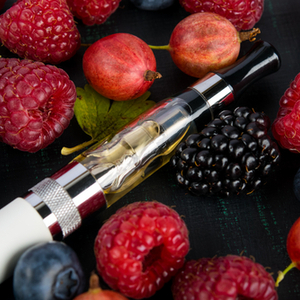Why Flavour & Advertising Bans On Vape Products Don't Work
3rd Feb 2021
Vaping has long been a controversial topic for so many people, it’s easy to see why there are so many rules and restrictions around them. Despite the fact that vaping is so much safer than tobacco smoking, public perception hasn’t always been in vaping’s favour. Whether it’s due to caution, overregulation, mismanagement by the big players in the industry, misinformation, lack of research or any number of other factors, there are areas where the restrictions on vaping are very high, without being backed up by scientific evidence. Today, there are different restrictions on almost every country you could visit , with some nations, particularly in regions such as Central and South America and South-East Asia being particularly stringent. In the majority of European nations, including the EU, restrictions are a little looser, but all nicotine products are regulated under the Tobacco Products Directive, meaning there are many regulations for sellers and manufacturers of vape products as well as for consumers.
What is Happening With Flavoured Vaping Products in the United States?
In the US, vaping has always been contentious, particularly as most of the rules and regulations around it are down to each individual state, rather than the federal government. This makes it even more difficult for vapers in the US to know what and where they can vape, and with rules changing all the time, vaping in the US can be a bit of a minefield.
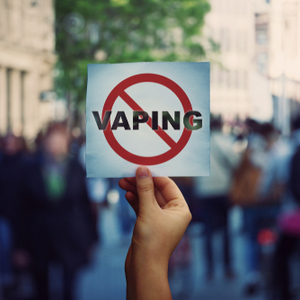
There are precedents in place for banning vape flavours, after considerable controversy around the banning of flavoured cigarettes in the US several years ago. Historically, menthol cigarettes in the US were marketed to primarily black communities, something which prevails to this day . When the 2009 Family Smoking Prevention and Tobacco Control act was put in place, flavoured cigarettes were banned from sale, but menthol cigarettes were made exempt after significant campaigning from big tobacco. Estimates show that around 320,000 deaths - primarily in these communities - could have been averted by 2050, had menthol cigarettes been banned alongside the rest of vape flavours in the US. In the UK and EU, menthol cigarettes were banned for sale in 2020 , however e-liquids and vapes have not been affected by the ban, which is great news for ex-menthol smokers. Banning flavoured e-liquids, however, including menthol flavoured e-liquids, only serves to limit the options available to current smokers and menthol smokers in particular. The massive array of vape flavours on offer gives those who are used to smoking flavoured cigarettes, including menthol cigarettes, an avenue to quitting that doesn't interfere with their normal habits.
After the 2019 EVALI outbreak in the US that affected over 2000 vapers, vaping is an especially hot topic in all areas across the pond. The outbreak killed 68 people, the majority of them younger people, and hospitalised thousands more . EVALI, which stands for e-cigarette, or vaping, product use-related lung injury, was found to cause serious lung damage and prompted major investigations at the state and federal level across the US. These investigations found that vitamin E acetate, found in the lungs of 29 infected vapers, and e-liquid of those affected by EVALI were the most likely causes of the cases. After an in-depth investigation, it was found that the majority of sufferers had purchased unlicensed, unregulated e-liquids. A recent study published by JAMA Network Open suggestedthat in the US states where some drugs products are legal, the incidence of EVALI was considerably less frequent. Once again, this revealed that most EVALI cases were observed in states where users may not have legal access to medical or more stringently regulated stores and instead had to turn to black-market sales of such items.
This report confirms what has been pointed out for many years by public health experts in a variety of different fields. Prohibition does not work, sensibly controlling substances does! If it is easy to get high-quality, affordable, safe products, the black market more or less dries up. Who do you know making bathtub moonshine these days, after all, when it’s easy and safe to nip down to the supermarket to get a drink? Studies from around the world continue to show that the reaction of customers to having goods unavailable typically turns to contraband versions purchased on the black market. In the case of minors, who are more likely to experiment and participate in risky activities as an age group, this is exacerbated.
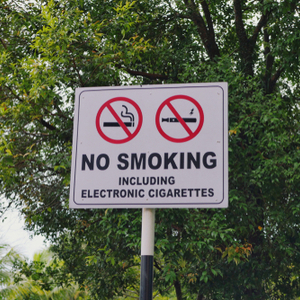
In the past year, multiple states, including New York, have banned or heavily restricted the sale of vape products, particularly flavoured vape products. The 2020 NY budget updated vaping laws to read that the “sale of flavoured vapour products intended to be used for the consumption of nicotine is prohibited.” Vaping was also banned in most public places, can’t be sold in pharmacies and can’t be sold at a discount, in a multipack discount or with a coupon to reduce the price. This has obviously had a significant impact on vapers in the area, making it more difficult than ever to get hold of e-liquids locally and making it more likely that they will get them shipped in from out of state or from other, less trustworthy and unregulated avenues, which is what led to the 2019 EVALI outbreak in the first place. New York joins 11 other states with statewide bans on vaping indoors, including California and a cluster of states on the north-east coast. Interestingly, these states were some of those hit hardest by the EVALI outbreak. The notable exception here is Texas, which saw a high number of cases in 2019 but currently has no statewide ban on vaping, though local municipalities are allowed to implement their own restrictions, which several communities have done.
Why Are Vape Flavours Being Banned?
For the past few years, there have been strong political movements to implement bans on certain e-liquid flavours, on the grounds that they are appealing to young people, who have taken up vaping in concerning numbers. Some studies report that up to 20% of adolescents who currently use e-cigarettes had never smoked a traditional cigarette, which is incredibly concerning. With a new administration now in the White House though, it will be interesting to see how vaping regulation is impacted in the US going forward.
The reasoning behind vaping flavour restrictions, such as the one in New York State, is that younger markets are drawn to fruity, sweet and exotic flavours more than tobacco flavours, and that this range of flavours inspires them to take up vaping. This also ignores, however, the millions of vapers who vape to help them stop smokingand use these flavoured e-liquids, with the majority of former smokers now using fruit and sweet-flavoured e-liquids on a daily basis, and fewer than 30% of regular vapers using e-liquids flavoured with tobacco. While many ex-smokers start vaping with tobacco flavoured e-liquids will over time gravitate towards other flavours, and reports show that those who vape non-tobacco flavours are actually more likely to quit for good in the long run.
It is really important to ensure that young people aren’t encouraged to vape as much as possible, but it is doubtful that flavour bans can help to minimise this, as existing research is not only inconclusive, but most underage vapers will also be getting their vape equipment from illegal sources. It is unlikely that the supply and demand for distributors supplying tobacco products to underage consumers would be affected by reducing the range of flavours available to adult vapers.
Current Flavour & Advertising Regulations in the UK
Since leaving the EU on January 1st 2020, the UK hasn’t actually been subject to the EU’s Tobacco Products Directive rules, however at the time of writing, the rules haven't actually changed all that much . While the UK has long had a positive relationship with vaping and e-cigs, unlike a lot of other countries, there are probably a few things higher up the legislator's priority list at the moment!
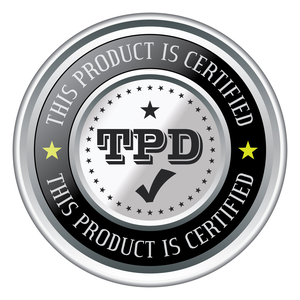
The Tobacco Products Directive was first introduced in 2014, but it was not until 2017 that most rules affecting vapers came into effect. Most of the TPD rules relate to the packaging of e-liquids, minimum safety and quality standards, increased consumer information and the introduction of protections to prevent children from accessing e-liquids and other vaping products. Some of these rules are more likely to be reversed in the post-EU UK than others, but the vast majority of attempted de-regulation of vape products tends to be met with caution (or with resistance, depending on who you ask), so it might be a while before the UK settles into its new rules around vaping. The main TPD rules that currently affect vapers in the UK and EU as a whole include:
- Vape tanks being restricted to no more than 2ml, to prevent overconsumption of e-liquid
- Nicotine containing e-liquids cannot be sold in a single container of more than 10ml
- The maximum strength of e-liquids sold in the UK is 2% nicotine, or 20mg/ml in a 10ml bottle
- All products and packaging containing nicotine, including nicotine e-liquids, need to be child-resistant and tamper-free
- The requirement of strict rules around the labelling of e-liquid packaging, including information and warnings for users.
Aside from these regulations, there aren’t any regulations on vape flavours in the UK and EU, unlike some regions in the US. Aside from banning certain additives like caffeine and taurine (which can be commonly found in energy drinks) from e-liquids, the vast majority of vape flavours are allowed to be sold, which results in the huge range of flavours currently available on the UK market. From sweet, dessert and fruity flavours to smoky, authentic tobacco, the wide range of flavours on the UK market makes it easy for vapers to find the perfect e-liquid to help them not just get off traditional cigarettes, but to stay off too.
However, when it comes to rules around advertising vapes and e-cigarettes in the UK, it’s a different story. The UK has a long history of particularly stringent rules around advertising, with bodies like the ASA bringing out new guidance and case studies all the time. Currently, e-cigarettes fall under advertising rules as a nicotine-containing product, alongside traditional tobacco cigarettes and other forms of tobacco product, like snus or chewing tobacco. This means that the content of ads for vapes and e-liquids are quite different to those in the US, and so vape companies and marketers have to tread carefully. Now some of these regulations are incredibly important and help to make vaping safer for everyone, such as rules that state vape companies cannot market their products towards children in any way, and that they shouldn’t be targeting anyone who isn’t already a smoker or vaper. However, opponents say that some other rules around the advertising of vapes makes it harder for consumers to find accurate information about vaping. After all, adverts for vape devices, e-liquids and other vaping products are banned in all these different mediums:
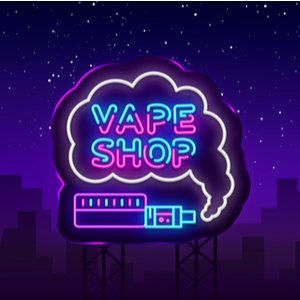
Newspapers, magazines and periodicals
- Advertising emails or text messages
- Online “display” ads in paid-for space, including banner or pop-up ads on web pages and online video advertisements, like the ones you get before YouTube videos
- Paid-for search listings like Google ads
- Viral advertisements or PR stunts
- Paid social media placements (most social media platforms like Facebook and Instagram also have their own tight rules around advertising vape products)
- Product placement in films, TV shows, radio shows or video games
- Commercial classified advertisements like the Gumtree or the Friday Ad
- In-app advertising on apps and mobile games
Proponents of reducing, relaxing or removing advertising bans on vaping and e-cigs say that looser restrictions would allow vape companies to give the public more information on what e-cigarettes are, how they work and the safety, especially when compared to cigarettes. For example, a 2017 survey found that more than a third of adults in the US believed that vaping is just as bad for you as smoking, which is completely incorrect. In the UK, it was found that more than half of current smokers thought that vaping was just as bad for them, if not more harmful, than continuing to smoke traditional cigarettes, which is something that has been disproven by numerous health bodies over the past 20 years, including by the HNS and Public Health England. Many of these people also reported not wanting to switch to vaping as they believed it to be more dangerous than their smoking habit, which is a very dangerous precedent to be setting. It is for this reason that many people advocate for looser restrictions around vaping advertising. The New Nicotine Alliance, a charity that advocates for more informed policy around “low-risk” alternatives to smoking, including vaping, e-cigarettes and snus, recently wrote to the UK government asking them to consider several new policies with regards to vaping rules. These included a few recommendations on advertising around e-cigarettes:
- Replacing bans on advertising of vaping products and other low-risk tobacco products on TV, radio, internet and in publications with rules that have strong controls on themes and placement of these ads, to make sure that young people and at-risk groups aren’t being advertised to
- Replacing warnings on vaping products and other low-risk tobacco products with risk communications to help better inform the public about e-cigarettes
- Enabling candid communication of relative risk to consumers through mainstream and mass-market advertising

On the other hand, there are also groups who believe that big tobacco companies would abuse their privileges if advertising restrictions were relaxed, which is also a valid claim. In the US, for example, where advertising standards are very different to the UK, vape giant Juul has landed in court on more than one occasion for marketing specifically to young people, rather than adult smokers looking to quit.
Advertising e-cigarettes and vaping products is a difficult balancing act to get right, though it looks like UK rules will most likely become looser over time now the country has left the EU.
Could Measures Against Vaping Flavours Make Things Worse?
Vaping flavour bans, in particular, aren’t always considered to be that effective, and in fact, can sometimes make vaping far more dangerous than it would be if flavoured e-liquids were easy to get hold of. By banning legitimate companies from producing and selling a product, history (and a considerable amount of contemporary evidence) tells us that people won’t stop using it, but instead will turn to other markets or methods to get their products. In the case of vaping, flavour bans lead to a larger black market share, which is incredibly unsafe for both adult vapers and adolescents, the very groups of people these bams are trying to protect. If there is a larger black market presence, it is easier to get hold of illicit products, and black-market sellers are not bound to the same age restrictions when selling their products as legal, licensed retailers. This means that not only are children and young people more likely to be able to get vaping products, but they are also more likely to be incredibly unsafe.
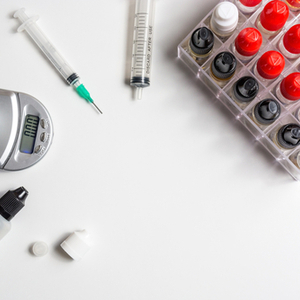
Some vapers may also start to make their own e-liquids, either for personal use or to sell to others. As a product that you inhale, it is so important that e-liquids are created, mixed and bottled in a completely sterile environment, to make sure that the end-user isn’t breathing in anything they shouldn’t be. With home-made products, the risk of contamination from all kinds of household bacteria is almost unavoidable, making these products incredibly unsafe to use. However, if they are the only option, this kind of e-liquid becomes far more prevalent in the market.
The implication that it gives to smokers and vapers regarding the safety of vaping is another significant point of concern in the conversation around banning e-liquid flavours. There is also an enormous amount of misinformation on the protection of vaping available, which may discourage those who may most profit from taking up vaping- current smokers seeking to quit. As we’ve mentioned there is a significant portion of the public who believe that vaping is just as damaging or even more damaging to your health than smoking, which is completely untrue, and is a dangerous myth to be spreading.
Vaping has been also been shown to be not only substantially better than smoking for your wellbeing, but also to be almost twice as effective in helping you quit compared to conventional NRTs such as nicotine patches, gum, lozenges, and inhalers.
There is a delicate balance to strike when it comes to the regulation of vape products and e-cigs, but the very tight restriction of these products is not the way to move forward.

